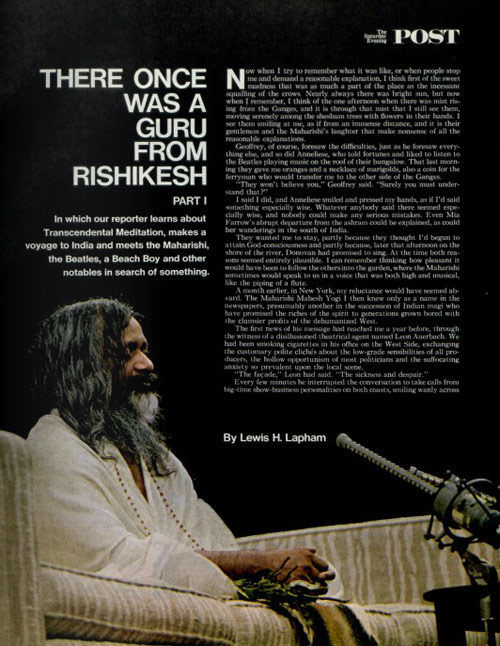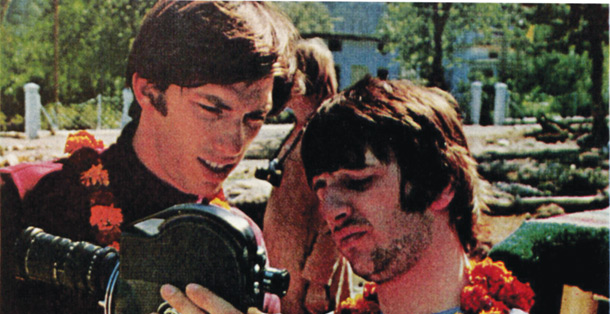In 1968, Post writer Lewis Lapham tracked down the Maharishi Mahesh Yogi, inventor of transcendental meditation. He also found himself meditating with the Beatles.
In 1968, Lewis Lapham journeyed to Rishikesh, India, to track down the Maharishi Mahesh Yogi, developer of transcendental meditation, which was becoming very popular among Hollywood’s jet set. He wasn’t the only one to make the pilgrimage. The Maharishi’s other visitors made up a who’s who of hip young celebrities, including Mia Farrow, Donovan, Mike Love of the Beach Boys, and the Beatles.
George Harrison proved most adept at transcendental meditation among the Fab Four; it was more challenging for the other band members. But for his part, Paul McCartney shared a dream he’d had that explains the origin of the Yellow Submarine, though not everyone was buying the interpretation:
Somebody asked George about his meditation, and he said his mantra was an English word. He further astounded everybody by saying be assumed the Beatles all had the same mantra. He didn’t know for sure, but his appeared in Lennon’s song, “I Am the Walrus.”
Paul McCartney [then] said he’d had a dream. To Anneliese Braun, an elfin woman to whom everyone applied on such matters, he explained that in his dream he’d been trapped in a leaking submarine of indeterminate color. When all appeared lost, however, the submarine surfaced in a crowded London street.
Anneliese clapped her hands in the enthusiastic way she had, like a child seeing his first snowfall. How very nice, she said, wondering if McCartney understood. He smiled and said he didn’t think he quite got all of it.
“Why,” she said, “… it’s the perfect meditation dream.”
The voyage in the submarine she interpreted as the descent toward pure consciousness through the vehicle of the mantra, the leaks represented anxiety, and the emergence in the street indicated a return to normal life, which was the purpose of all good meditation.
The other people present applauded, and in the ensuing silence at the far end of the table, I heard somebody say, “I’m sure it’s Wednesday, but they’re trying to tell me it’s Saturday.”
Read Lapham’s complete two-part report on his time with the Maharishi below.

Become a Saturday Evening Post member and enjoy unlimited access. Subscribe now



